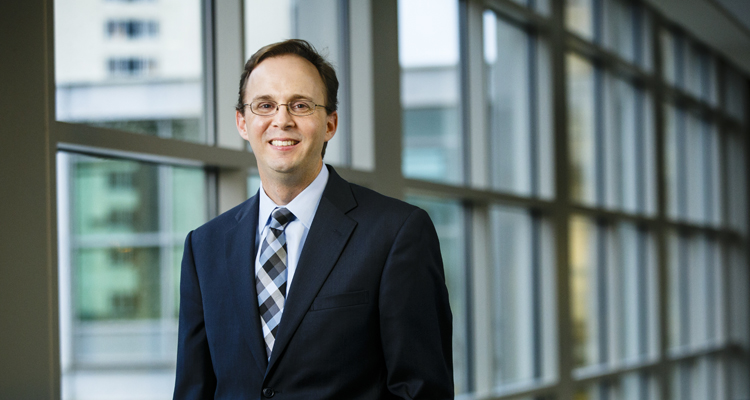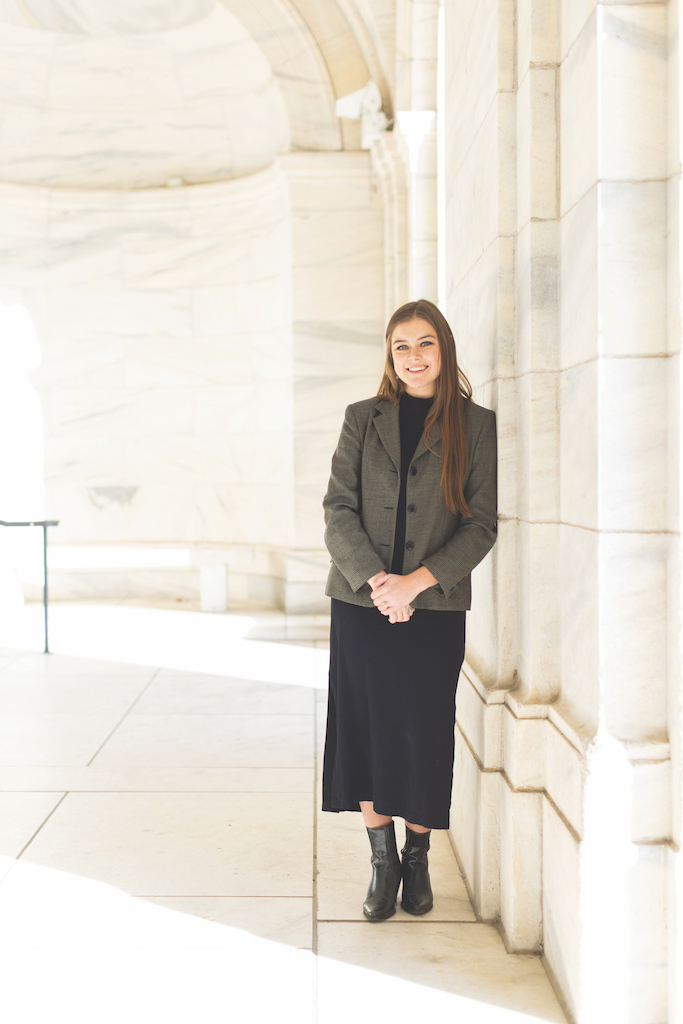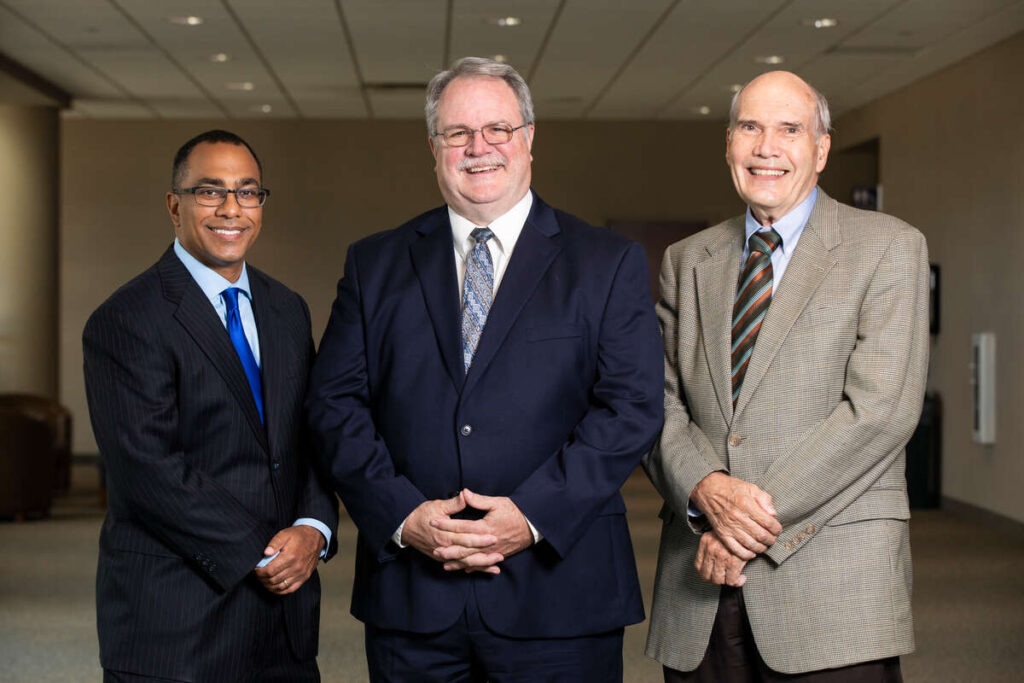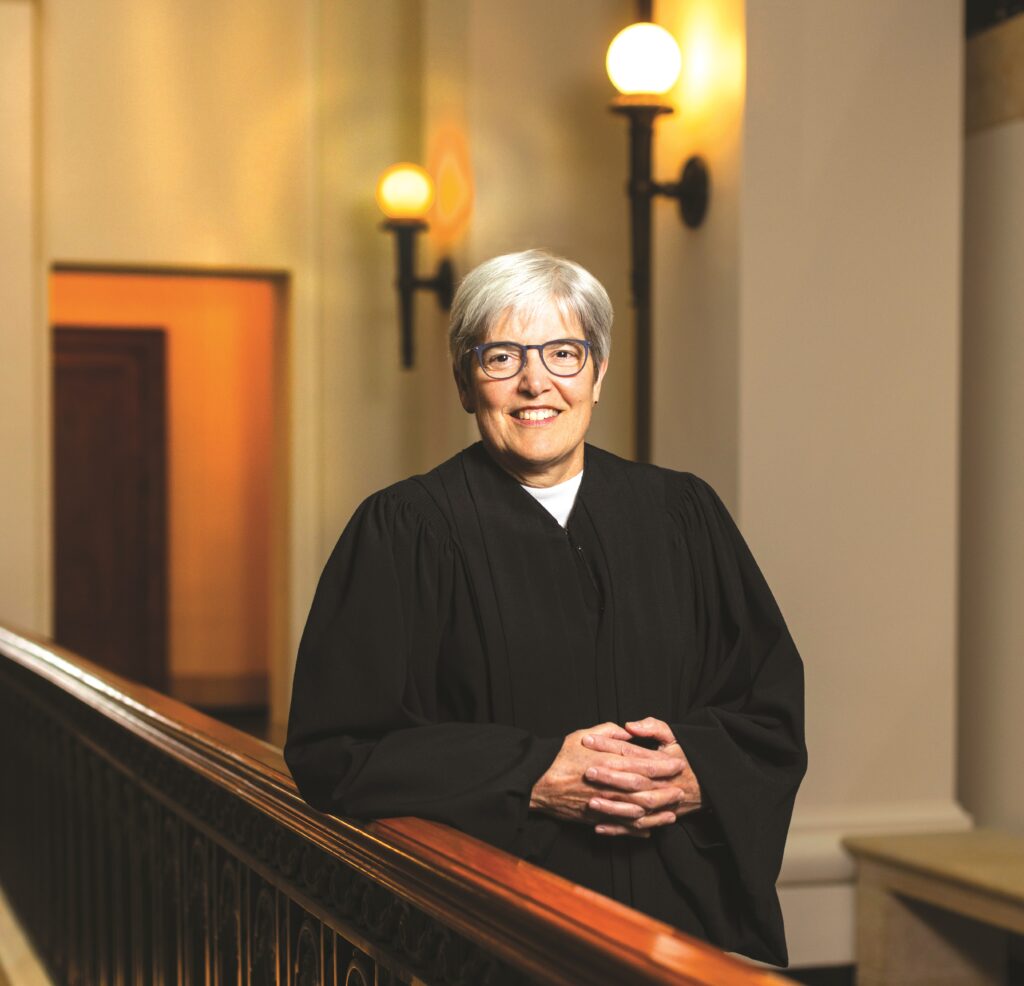Author’s note: My scholarship primarily focuses on the interaction of law and religion. I have again partnered with Professor John Witte, Jr., my mentor from Emory University – this time for the book, Religion and the American Constitutional Experiment, fourth edition, which will be released by Oxford University Press in March 2016. The book tells America’s story of religious liberty from its colonial beginnings through the most recent Supreme Court cases. Detailed appendices offer drafts of each of the religion clauses debated in 1788 and 1789, a table of all state constitutional laws on religious freedom and a summary of every Supreme Court case on religious liberty from 1815 to 2015. Throughout the book, we weave historical, case law, and comparative approaches while also addressing current hot-button issues: religious freedom versus sexual liberty, freedom of conscience and its limitations, religious group rights and the worries about its abuse, faith-based legal systems and their place in liberal democracies, and the fresh rise of anti-Semitism, Islamophobia and anti-Christianity in America and abroad.
I presented the book’s themes in a September 2015 lecture at the German Society of Comparative Law conference on “Religion, Values and Law.” By request, Witte and I wrote a “country report” for the United States on the topic of “Religious Law and Religious Courts as a Challenge for the State.” It is featured as a chapter in an upcoming book with a prestigious German press – Ed. Uwe Kischel (Verlag Mohr Siebeck, Tübingen, 2016) – and is excerpted below.
The essential rights and liberties of religion
Religious liberty in the United States draws upon the insights and experiences of the American colonial and early national founders from the 1600s and 1700s, especially. By the mid- to late-1700s, America’s founders had ideologically coalesced around what they called the “essential rights and liberties” of religion1 : (1) liberty of conscience; (2) free exercise of religion; (3) religious pluralism; (4) religious equality; (5) separation of church and state; and (6) disestablishment, at least of a national religion. These six principles formed the baseline understanding for the seminal discussions of religious liberty, which culminated in the First Amendment to the U.S. Constitution and various state religious liberty provisions, and they continue to have relevance for modern conceptions of religious liberty as well.
Liberty of conscience, for the founders, protected a person’s deepest beliefs. It encompassed the right to private judgment in matters of religion and the right to change one’s beliefs. It prohibited discrimination against people because of their religious or conscientious beliefs. And, for some founders, it gave a right of exemption from otherwise applicable laws. Free exercise of religion was closely connected to liberty of conscience. Whereas liberty of conscience entitled one to hold and change beliefs, free exercise gave a person the right to act publicly upon one’s conscientiously held beliefs (so long as the action did not unduly encroach upon others).
Religious pluralism was an independent constitutional value from the beginning. The polity and religions alike benefited from a variety of confessional forms of worship, for it both prevented one majoritarian group from oppressing minority groups and also allowed primacy for the power of religious persuasion rather than the power of the sword. Further, religious pluralism meant, for many founders, that a variety of religious structures should flourish. Schools, charities, families and other civic societies were vital bastions of religion and crucially important to the health of liberty within the nation at the same time. All three of these principles depended upon religious equality before the law. For the state to single out any religion for special benefits or burdens would upset the natural plurality of forms of worship 1 and structures of the faithful, and would also impinge upon the conscience and exercise rights of believers.
The founders relied upon the concept of separation of church and state both to protect the church from the state as well as the state from the church. Neither could thrive when the two were unduly intermixed. Separation also protected the individual’s liberty of conscience from the intrusions of both church and state, since “religion is a matter which lies solely between a man and his God.”2 Finally, for many founders, disestablishment of religion was an essential ingredient of religious liberty by foreclosing government from coercively prescribing mandatory forms of religious belief, doctrine, and practice. Disestablishment thus protected liberty of conscience and free exercise of religion, and it further bolstered other key principles by ensuring equality of all religious groups and individuals before the law. To be sure, a number of states maintained religious establishments for some years after a national establishment was formally outlawed, but the trend was clear by the late 1700s: Disestablishment of religion was the final link in the interlocking chain of the essential rights and liberties of religion.
These six principles remain central to religious liberty today, and form the intellectual underpinnings for America’s modern legal framework for religious liberty. Two dualities form the backbone of that framework – (1) the distinction between constitutional religious liberty protections and statutory religious liberty protections, and (2) the differences between federal (national) protections and state protections. ...
Group religious liberty rights
[Within the framework of religious liberty in the United States, religious groups merit special attention.] The best historical understanding affirms that religious entities have the right to be free from undue government influence, control and interference in their internal activities. When religious organizations choose to participate in governmental programs and benefits, they should be allowed to do so equally without the Establishment Clause acting as an obstacle. When they choose to assist in providing social services, and even using government funds, they should be allowed to do so fairly but on their own terms so long as they do not violate the free exercise rights of the users of their services. When they resort to civil courts for resolution of internal disputes, their internal decisions about internal matters should be respected, although general neutral principles of law may be applied provided they do not unduly touch upon religious matters.
Two groups of Supreme Court case law provide context for these principles. The first is a deep well of cases pertaining to church property disputes. Most of the early Supreme Court cases touching religion involved church property disputes, and a series of important decisions through the 20th century built upon those precedents. Two clear yet discordant themes emerge in the church property cases. In one line of cases, the Court has held that religious groups must be treated the same as other legal associations; they are subject to standard legal principles (“neutral principles of law”)3 when resolving disputes. In a second line of cases, the Court has held that religious groups must be treated differently from other organizations, and the courts must diligently avoid deciding matters of disputed doctrine. Courts thus frequently give substantial deference to decisions by internal religious bodies.4 Most lower courts have converged on neutral principles approaches to decide property disputes within and among religious groups. But the strong norm of judicial aversion to deciding internal religious disputes persists as well and has strongly influenced other areas of religious group rights, especially concerning “internal governance of the church.”5
The second group of cases is of more recent vintage and flows from that last principle. This line also strongly affirms that the rights of religious groups are grounded in the First Amendment. In 2012, the Court unanimously held in Hosanna-Tabor Evangelical Lutheran Church and School v. EEOC that the Free Exercise Clause “protects a religious group’s right to shape its own faith and mission.”6 The Court also said that the rights of religious organizations were grounded in the Establishment Clause. “Both Religion Clauses bar the government from interfering” with an internal decision of a religious group. The Hosanna- Tabor case involved a religious school’s termination of a former teacher, ostensibly in violation of certain provisions of the Americans with Disabilities Act (a federal nondiscrimination statute). With a nod to the principle of separation of church and state, the Court held that applying antidiscrimination laws to religious organizations would improperly accord “the state the power to determine which individuals will minister to the faithful.”7
This strong statement of constitutional rights for religious organizations was followed two years later by an even stronger reading of a federal religious liberty statute in favor of a religious group. In Burwell v. Hobby Lobby (2014), the Court held that for-profit, closely held corporations could “exercise” religion for purposes of the federal Religious Freedom Restoration Act (RFRA). The corporations sought protection from a mandate under the Affordable Care Act (ACA) requiring them to provide certain kinds of contraceptive health coverage to female employees. A divided Court interpreted the intent and text of RFRA to extend religious liberty protection to such corporations, and proceeded to rule in favor of the corporations since the regulation “impose[d] a substantial burden on the [corporations’] ability to conduct business in accordance with their religious beliefs.”8 This strong reading of RFRA, in favor of religious group rights even to the point of covering for-profit corporations, has generated criticism that the Court has gone too far protecting religion at the expense of the “full and equal citizenship” of affected parties.9
Overall, the line of cases grounding religious group rights in the Constitution – whether in church property cases or in employment cases like Hosanna-Tabor – is firmly in accord with America’s founding principles of religious liberty. Whether for-profit corporations may exercise religious rights is a more contentious and debatable matter, but overall the notion aligns with the founding principles and also aligns with the strong protections afforded to corporations, partnerships and many other associations by American statutes and case law today.10 Indeed, it would be anomalous for the government to give religious groups less protection just because they exercise religious functions. Whether such religious rights should extend further, as adverse third-party effects increase or as the “beliefs” of the corporation become more attenuated and harder to ascertain, will present challenging questions going forward.
These two lines of cases make clear that religious liberty claims do not always involve claims by an individual against a government imposition – of swearing an oath, of joining the military, of having to send a child to a public school that has Scripture readings or prayers that do not align with one’s beliefs. They also involve churches and other religious groups who seek to keep their property from a dissident faction, religious schools who want to hire and fire like-minded believers, voluntary religious student groups who wish to share facilities and funds on an equal basis with non- religious groups, nonprofit social service organizations who seek to serve vulnerable members of society while holding true to their core beliefs, and even for-profit organizations and entities who want to participate in the economic marketplace without sacrificing their convictions. Recognizing that religious liberty extends collectively, to groups and “institutions,” is an important part of America’s heritage.11
Joel A. Nichols is associate dean for academic affairs and professor of law at the University of St. Thomas School of Law in Minnesota and senior fellow at the Emory University Center for the Study of Law and Religion. Prior to joining St. Thomas in 2007, he taught at Pepperdine University.
1 The phrase is used in several historical documents, but see especially Elisha Williams, The Essential Rights and Liberties of Protestants (1744).
2 “Letter to the Danbury Baptist Association (1802),” in The Writings of Thomas Jefferson: Being his Autobiography, Correspondence, Reports, Messages, Addresses, and Other Writings, Official and Private, ed. H. A. Washington (1854), 8:113
3 Jones v. Wolf, 443 U.S. 595 (1979).
4 See, for example, Serbian E. Orthodox Diocese v. Miliojevich, 426 U.S. 696 (1976).
5 Hosanna-Tabor Evangelical Lutheran Church & Sch. v. EEOC, 132 S. Ct. 694, 702-703, 707-709 (2012).
6 Id. at 706.
7 Id.
8 Burwell v. Hobby Lobby Stores, Inc., 134 S. Ct. 2751 (2014)
9 Elizabeth Sepper, “Reports of Accommodation’s Death Have Been Greatly Exaggerated,” Harvard Law Review Forum 128 (2014): 24, 30. For criticism in the same vein of Hosanna- Tabor, see Leslie C. Griffin, “The Sins of Hosanna Tabor,” Indiana Law Review 88 (2013): 981–1019
10 See Brett McDonnell, “The Liberal Case for Hobby Lobby,” Arizona Law Review 57 (2015): 777-822 (discussing how the Hobby Lobby opinion squares well with corporate social responsibility and the notion that corporations can and sometimes do pursue goals other than maximizing shareholder profits).
11 Paul Horwitz, “Defending (Religious) Institutionalism,” Virginia Law Review 99 (2013): 1052. See his fuller treatment in Paul Horwitz, First Amendment Institutions (2013). See also the nuanced discussion about corporate organizational rights and religion in Ronald J. Colombo, The First Amendment and the Business Corporation (2015), esp. 139-76.
Read more from St. Thomas Lawyer.





